In the ever-evolving landscape of human behavior research, one technology has emerged as a window into our cognitive processes: eye tracking. The human eye is a powerful tool for conveying information. So, understanding how it interacts with the visual world can unlock valuable insights across domains. From psychology to marketing, eye tracking has proven its worth as a tool that transcends industries and disciplines. Today’s article delves into the fascinating realm of eye tracking, focusing specifically on one of its most illuminating outputs: Eye Tracking Heat Maps. By tracking the eye’s movements and translating them into visual representations, these eye tracking heat map tools also offer us a unique lens through which we can comprehend the nuances of visual attention.
In the following sections, we will explore the components, applications, benefits, and limitations of an eye tracking heat map, shedding light on how they are revolutionizing how we perceive and interact with information.
Understanding Eye Tracking
Eye tracking, a technology bridging psychology, human behavior, and technology, involves monitoring eye movements to unravel the nuances of visual interaction. So, this technology reveals where our gaze lands, how it traverses information, and the duration it lingers on specific points. Eye tracking, thus provides a real-time glimpse into our subconscious reactions by exposing the intricate relationship between visual stimuli and cognitive responses. Eye tracking devices use specialized cameras and infrared light to capture reflections and refractions from the eye, translating them into precise gaze data.
This technology has far-reaching implications across various disciplines. It aids psychology in deciphering cognitive processes, guides marketing strategies by uncovering consumer behaviors, shapes user interfaces through gaze patterns in UX design, and so on. This foundational understanding lays the groundwork for exploring the subsequent sections on an eye tracking heat map, so visualizes gaze patterns to offer deeper insights into human behavior and interactions. Check the heat map examples here.
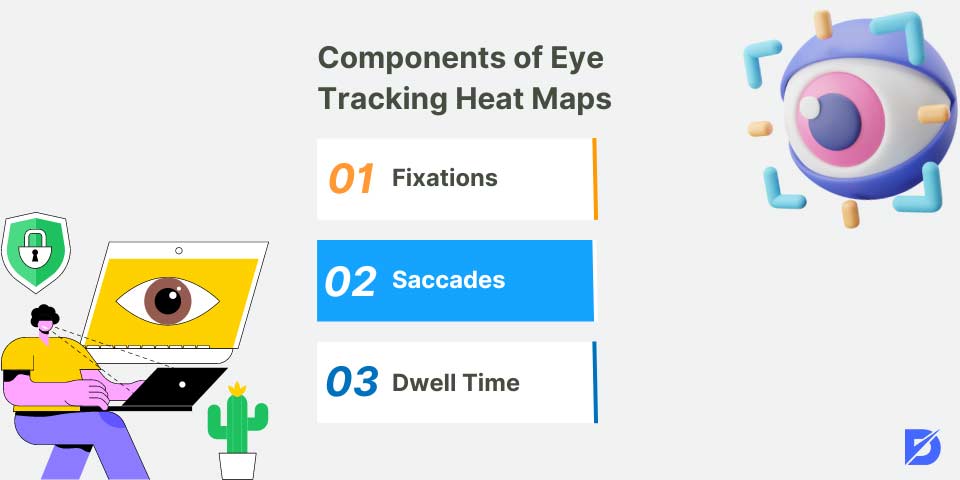
Components of Eye Tracking Heat Maps
Intricately composed like musical notes on a score, an eye tracking heat map is a symphony of visual cues illuminating visual attention dynamics. So, this section unpacks the fundamental elements within an eye tracking heat map: fixations, saccades, and dwell time, unraveling the narratives they weave about a viewer’s visual behavior.
- Fixations: These are the anchors in the visual journey, representing the moments when the eye comes to rest on a specific point. Fixations hint at the points of interest that captivate attention, highlighting where the viewer’s mind is engaged.
- Saccades: The rapid, glancing movements that link fixations are saccades. They showcase how the brain processes information by rapidly jumping from one fixation point to another. The lengths of saccades can unveil the cognitive load or complexity of the information being processed.
- Dwell Time: The duration of fixations, referred to as dwell time, signifies the depth of engagement. So, longer dwell times indicate a heightened interest, indicating content that triggers contemplation or a pause for understanding.
A captivating illustration is that of an eye tracking heat map. Areas of intense color denote fixations, with the density mapping the concentration of gazes. Lines connecting fixations showcase the saccades’ paths, resembling intricate neural connections. Longer dwell times are depicted by darker, warmer hues, revealing the spots where the viewer lingers longer. Thus, these visual examples help decode the intricate dance between fixations, saccades, and dwell time, vividly depicting how the eye journeys through visual landscapes.
Applications of Eye Tracking Heat Maps
An eye tracking heat map has woven itself into a rich collection of applications across fields. So, it revolutionized the way we understand human behavior and interactions. From web design to market research, their impact resonates profoundly, also shaping strategies and enhancing user experiences.
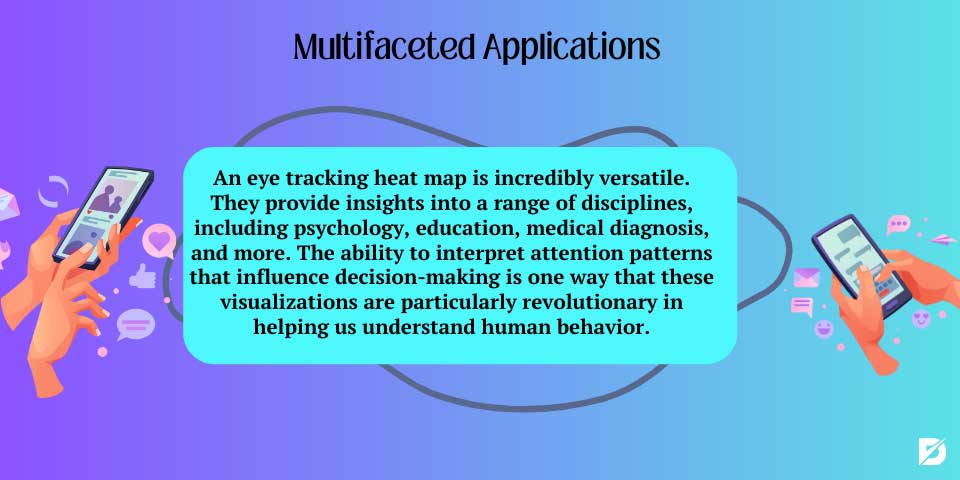
Multifaceted Applications
The versatility of an eye tracking heat map knows no bounds. They offer insights into fields as diverse as psychology, education, medical diagnostics, and beyond. These visualizations are particularly transformative in understanding human behavior, allowing us to decode attention patterns that shape decision-making.
Elevating Web Design and User Experience
In web design and user experience (UX) optimization, the eye tracking heat map is similar to a treasure map for designers. Heat maps unveil the intricacies of user behavior by tracking where users linger, click, and navigate. Designers can then adapt layouts, content placement, and calls-to-action to align with these patterns, creating seamless and engaging experiences that captivate users.

Insights in Market Research
The eye tracking heat map is a treasure for market researchers looking to delve into consumer behavior and preferences. These visualizations expose the exact points of interest on product pages, advertisements, and packaging, revealing what captures attention and what’s overlooked. Market researchers can fine-tune strategies, tailor messaging, and optimize visual content for maximum impact by understanding what elements resonate most.
Unmasking Unconscious Responses
One of the most intriguing aspects of an eye tracking heat map is its ability to reveal subconscious responses. Often, users themselves are unaware of where their eyes wander and what draws their attention. Heat map tracking brings these subtle reactions to the surface, providing marketers and designers with actionable insights that go beyond self-reported data.

Designing Effective Content
Whether it’s crafting an attention-grabbing headline or selecting the right imagery, eye tracking heat maps offer a data-driven approach to content creation. By identifying the hotspots where users fixate, content creators can create their messaging to comply with what resonates most, increasing engagement. Hence, it can convey information more effectively.
In an age where understanding the nuances of human behavior is paramount, the eye tracking heat map stands as a bridge between perception and application. Their capacity to illuminate attention patterns revolutionizes how we design websites, conduct market research, and optimize experiences. As the digital landscape continues to evolve, the eye tracking heat map empowers us to create more intuitive and engaging interactions that resonate deeply with users.
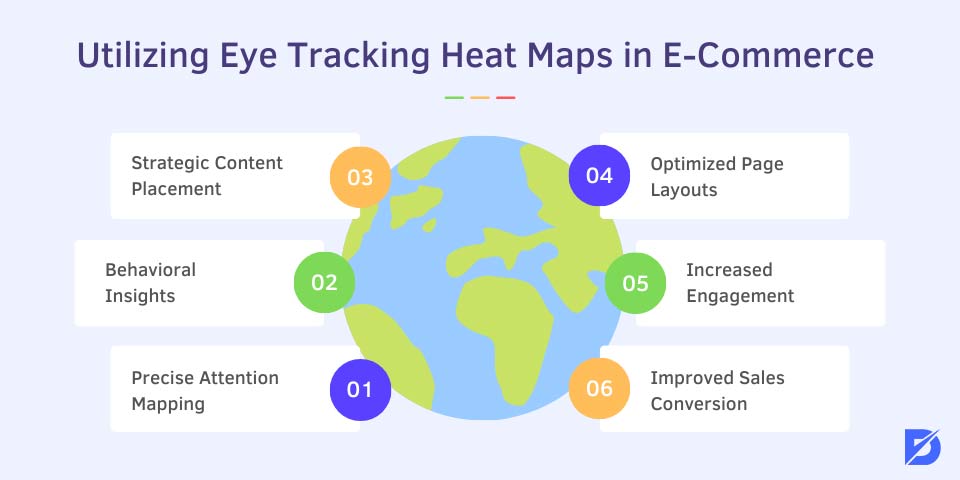
Utilizing Eye Tracking Heat Maps in E-Commerce
Incorporating an eye tracking heat map into the e-commerce ecosystem empowers businesses to decode user behavior, optimize design elements, and also foster a more engaging and satisfying shopping journey. Ultimately it translates into improved sales and customer loyalty. Now, let’s check how we can benefit from an eye tracking heat map in the e-commerce world.
- Precise Attention Mapping: Eye tracking heat maps pinpoint exact areas where users focus their attention. By shedding light on critical product features, pricing information, and customer reviews that sway purchasing decisions.
- Behavioral Insights: Analyzing fixations, saccades, and dwell times reveals the sequence in which users engage with content, helping businesses design pages that align with the natural flow of information.
- Strategic Content Placement: Armed with insights from heat maps, e-commerce designers can strategically position high-impact information. Also ensuring that vital details are presented prominently and intuitively.
- Optimized Page Layouts: By understanding which elements attract the most attention, e-commerce platforms can optimize page layouts for seamless navigation. Also reducing friction and enhancing the overall shopping experience.
- Increased Engagement: An eye tracking heat map aids in crafting engaging interfaces that capture users’ interest. Encouraging them to explore product pages more extensively and interact with calls-to-action.
- Improved Sales Conversion: With eye tracking heat maps guiding design decisions, e-commerce businesses can create persuasive and compelling product pages that drive higher conversion rates and also boost sales.
Creating Heatmaps for Your Website: A Step-by-Step Guide
Heatmaps offer valuable visual insights into how users interact with your website. So, follow this step-by-step guide to create effective heatmaps and unlock crucial user behavior data.
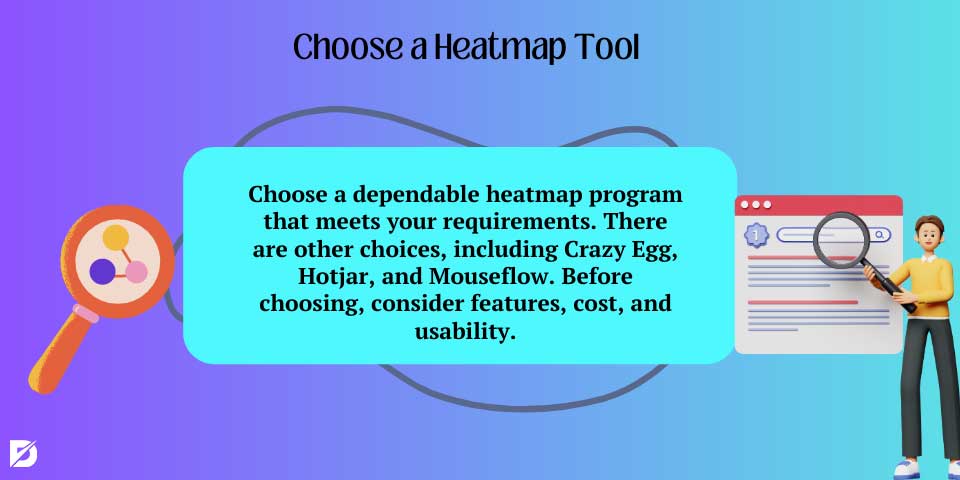
Choose a Heatmap Tool
Select a reliable heatmap tool that suits your needs. Several options are available, such as Crazy Egg, Hotjar, and Mouseflow. Evaluate features, pricing, and ease of use before making a decision. You can also check the Google Analytics heat map.
Sign Up and Install Code
Create an account with your chosen heatmap tool and follow the instructions to install the tracking code on your website. This code will collect data and generate heatmaps based on user interactions.
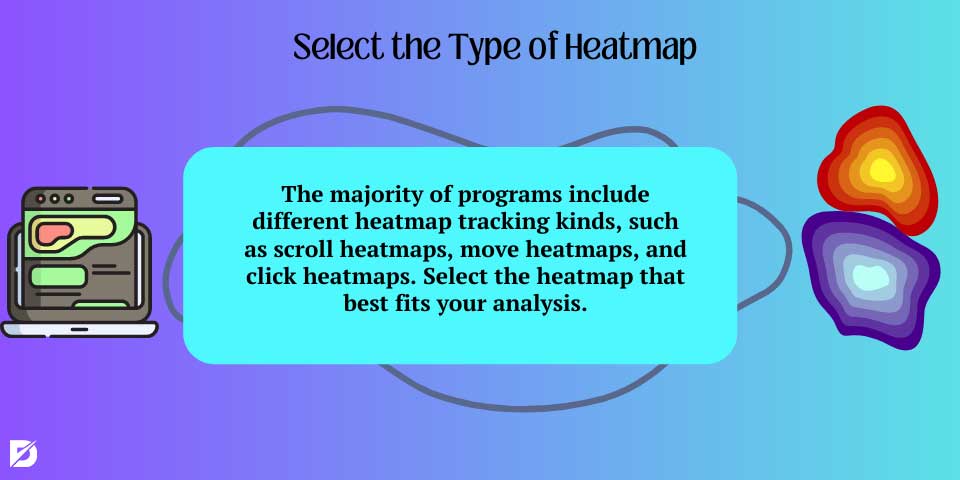
Select the Type of Heatmap
Most tools offer various heatmap tracking types. These are including click heatmaps (showing where users click), scroll heatmaps (revealing how far users scroll down), and also move heatmaps (displaying mouse movement patterns). Choose the appropriate heatmap for your analysis.
Define the Page and Timeframe
Specify the webpage you want to analyze and set the timeframe for data collection. This helps you focus on specific pages or campaigns for precise insights.
Gather Data
Allow the heatmap tool to gather data over the desired timeframe. So this period should be long enough to capture a representative sample of user behavior.
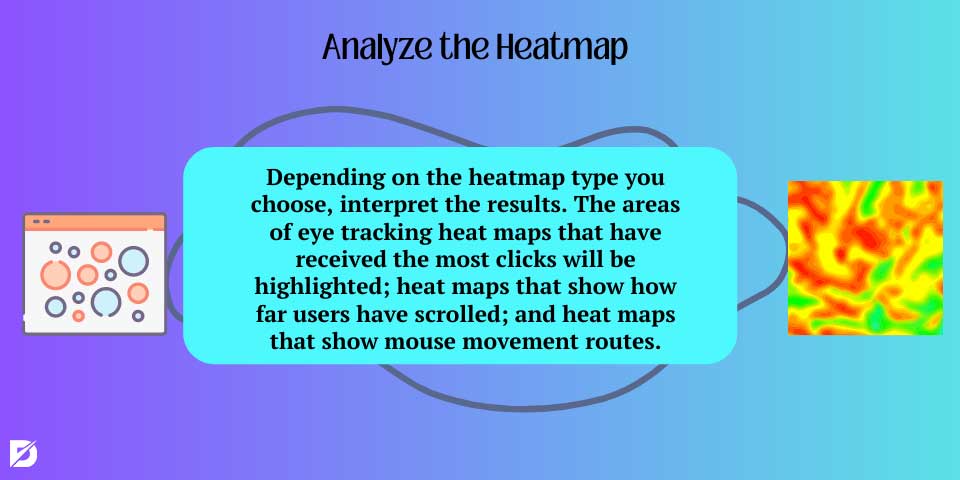
Analyze the Heatmap
Once data collection is complete, access the heatmap tracking generated by the tool. Interpret the results based on the heatmap type you chose. For click eye tracking heat maps, areas with more clicks will be highlighted. For scroll heatmaps, you’ll see how far users scrolled; and for move heatmaps, mouse movement paths will be visible.
Make Data-Driven Decisions
Use the insights from the heatmap tracking to make informed design and content decisions. So, consider adjusting the placement of essential elements, optimizing calls-to-action, and enhancing user experience based on observed behaviors.
Unveiling User Insights through Heatmaps
In the digital landscape where user experience controls what site is best, an eye tracking heat map emerges as an indispensable tool for deciphering user behavior and optimizing website design. These visual representations offer a direct window into user interactions, also revealing where they click, scroll, and linger. By embracing heatmap tracking, website owners and designers gain a competitive edge. Also transforming data into actionable insights that shape user-centric strategies.
The journey from choosing a heatmap tool to analyzing patterns and making informed decisions brings a data-driven approach to web development. So, as the technology evolves and user preferences shift, eye tracking heat maps ensure that websites remain dynamic, adaptive, and finely tuned to deliver exceptional user experiences. Whether you’re refining content placement or adjusting calls-to-action, the power of heatmaps empowers you to create websites that resonate with your audience and increase satisfaction and success in the digital realm.
Frequently Asked Questions About
A heatmap is a visual representation that displays user interaction patterns on a website. So, it uses color gradients to highlight areas where users click, move their mouse, or scroll, providing valuable insights into user behavior and preferences.
Heatmaps clearly visualize user behavior, also helping website owners and designers identify trends and patterns. This information enables data-driven decision-making to optimize page layouts, content placement and calls to action. So, ultimately enhancing the user experience and increasing conversions.
Click heatmaps reveal the areas where users click the most on a webpage. These insights help identify popular links, buttons, and interactive elements. Also, guiding decisions to prioritize and optimize those elements for better user engagement.
Scroll heatmaps illustrate how far users scroll down a webpage. They provide insights into content engagement and help identify “scroll drop-off” points. Thus, allowing designers to strategically position important content and maintain user engagement throughout the page.
Move heatmaps show mouse movement patterns on a webpage. They reveal areas where users hover, indicating points of interest or uncertainty. So, this information can guide the placement of tooltips, links, or interactive elements for a more intuitive user experience.





No comments to show.